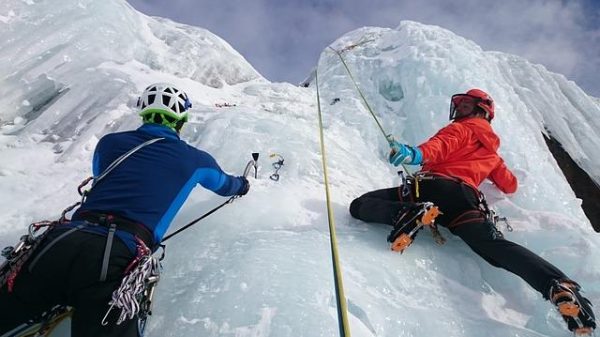In recent years, the allure of extreme sports has captivated a global audience, drawing enthusiasts to remote and pristine environments in pursuit of adrenaline and adventure. Activities such as rock climbing, mountain biking, and base jumping have transitioned from niche pursuits to mainstream phenomena, celebrated for their ability to push human limits and connect individuals with nature’s raw beauty. However, as the popularity of these sports continues to surge, questions arise regarding their impact on the very landscapes that make them possible. This article examines the intersection of extreme sports and environmental conservation, exploring whether the growing demand for these exhilarating activities is inadvertently contributing to environmental degradation. By analyzing the ecological footprints of these sports and assessing current mitigation strategies, we aim to provide a comprehensive understanding of the challenges and responsibilities faced by both participants and policymakers in preserving the natural world.
Understanding the Rise of Extreme Sports and Its Environmental Implications
As extreme sports like rock climbing, mountain biking, and paragliding gain traction among thrill-seekers, the environmental consequences of these activities have become a subject of increasing concern. While the allure of conquering untouched landscapes offers an adrenaline rush, it also poses significant threats to the delicate ecosystems that these adventurers traverse. Erosion, habitat disruption, and waste accumulation are just a few of the ecological issues linked to the rise in extreme sports participation.
- Erosion: Frequent foot and bike traffic can wear down trails, leading to soil erosion and vegetation loss.
- Habitat Disruption: The presence of humans in remote areas can disturb wildlife, potentially altering natural behaviors and migration patterns.
- Waste Accumulation: Despite the “leave no trace” ethos, increased footfall often results in litter, which can be detrimental to the local flora and fauna.
Moreover, the construction of infrastructure to support these activities—such as roads, parking lots, and facilities—further exacerbates the impact on natural environments. As the demand for extreme sports grows, it is imperative to strike a balance between adventure and conservation. Implementing sustainable practices and promoting environmental awareness among enthusiasts can help mitigate the adverse effects while preserving these pristine areas for future generations.

Assessing the Impact of Extreme Sports on Natural Ecosystems
Extreme sports, from mountain biking to rock climbing, have surged in popularity, bringing with them a myriad of environmental challenges. These activities often occur in pristine natural areas, which are not only the backdrop for adventure but also delicate ecosystems. The increased footfall in these regions can lead to soil erosion, habitat destruction, and disturbances to wildlife. For instance, the constant traffic of mountain bikes can degrade trails, causing the loss of vegetation and soil, which in turn affects the flora and fauna that rely on these ecosystems.
- Soil Compaction and Erosion: Repeated use of trails can lead to soil compaction, reducing its ability to absorb water and leading to increased runoff and erosion.
- Disturbance to Wildlife: The presence of humans can disrupt the natural behavior of animals, potentially leading to decreased reproduction rates and increased stress.
- Introduction of Invasive Species: Equipment and clothing can inadvertently carry seeds from one location to another, introducing non-native species that can outcompete local flora.
While the thrill of these sports is undeniable, it’s crucial for enthusiasts and organizers to adopt sustainable practices to minimize their environmental footprint. By implementing measures such as designated trails, limiting participant numbers, and promoting ‘leave no trace’ principles, the balance between adventure and conservation can be maintained.

Strategies for Mitigating Environmental Damage from Extreme Sports Activities
Extreme sports enthusiasts and environmentalists alike are increasingly aware of the impact that these high-adrenaline activities can have on nature. To minimize harm, it is crucial to adopt sustainable practices. One effective strategy is the implementation of eco-friendly gear and equipment. Manufacturers are now producing items made from recycled or sustainable materials, reducing the carbon footprint associated with the production and disposal of sporting goods.
Additionally, promoting responsible use of natural landscapes is key. This can be achieved through education and awareness campaigns aimed at athletes and organizers. These initiatives should emphasize the importance of respecting local wildlife, maintaining trails, and adhering to “Leave No Trace” principles. Collaborative efforts between extreme sports organizations and environmental groups can also lead to the development of guidelines that ensure events and activities are conducted in an eco-conscious manner. By integrating these strategies, the thrill of extreme sports can coexist with the preservation of our planet’s natural beauty.
Promoting Sustainable Practices in the Extreme Sports Community
While the thrill of extreme sports offers unparalleled adrenaline rushes, it’s crucial to address the environmental footprint associated with these activities. Promoting sustainable practices within this community not only preserves the natural landscapes that enthusiasts love but also sets a precedent for responsible recreation. As the popularity of these sports rises, so does the potential for increased ecological impact, including trail erosion, littering, and disturbances to wildlife habitats.
To mitigate these effects, the extreme sports community can adopt several environmentally friendly practices:
- Use eco-friendly gear: Choose equipment made from sustainable materials and support brands committed to environmental stewardship.
- Practice Leave No Trace principles: Always carry out what you bring in, and strive to leave natural spaces better than you found them.
- Support local conservation efforts: Engage with organizations that focus on preserving and restoring ecosystems affected by outdoor activities.
- Opt for sustainable transportation: Carpool, use public transport, or choose eco-friendly vehicles to reduce carbon emissions.
By incorporating these practices, the extreme sports community can significantly reduce its environmental impact while continuing to enjoy the exhilaration that these activities provide.










